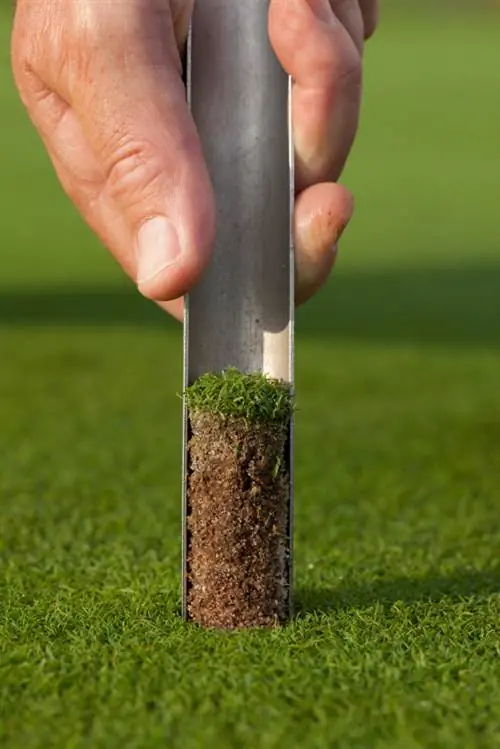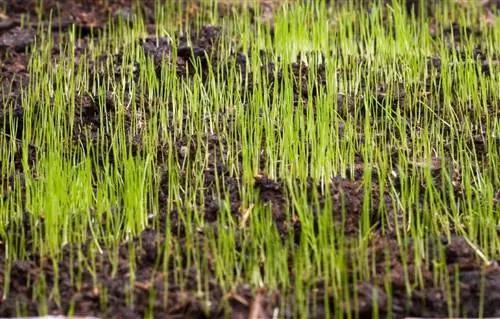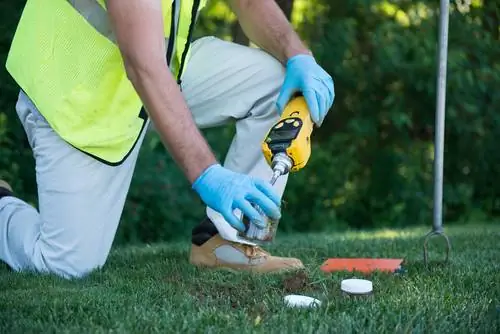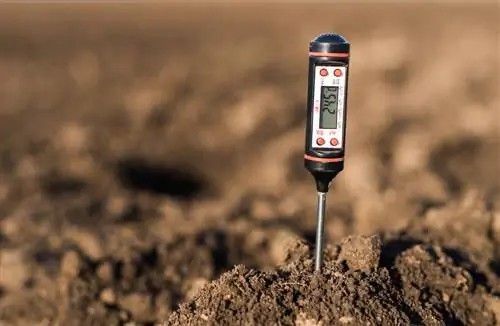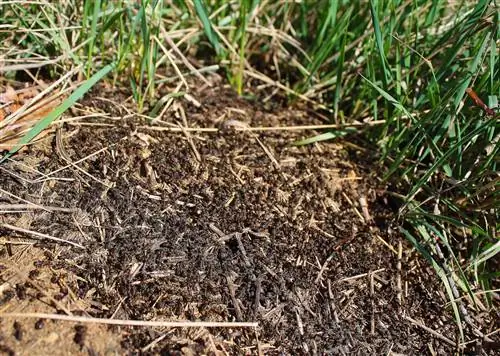- Author admin [email protected].
- Public 2023-12-16 16:46.
- Last modified 2025-01-23 11:20.
If the lawn is not growing properly, various reasons can be responsible. The most common lawn problems arise from the soil. It contains too little or too much of certain substances. A soil analysis shows what the lawn is suffering from.
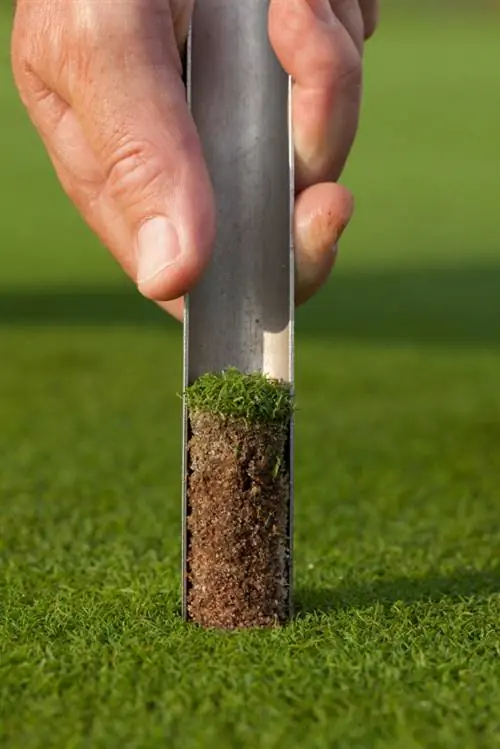
How do I do a soil analysis for my lawn?
To conduct a soil analysis for your lawn, observe indicator plants, measure acidity with a pH meter and, if necessary, have a soil sample analyzed in the laboratory. This will help you identify the causes of lawn problems and take appropriate action.
The most important methods for soil analysis
- Watching indicator plants
- Measuring acidity
- Have the soil sample tested in the laboratory
Which indicator plants grow on the ground?
Indicator plants are plants that grow particularly well on certain soils. The frequent occurrence of nettles shows that the soil is very rich in nitrogen. Wild dandelions thrive in poor soils with a high lime content. Field clover indicates a nitrogen deficiency, while plantain is common in compacted soil.
Many problems can be solved just by observing. The addition of nitrogen, humus or loosening and drainage of the soil ensure that the lawn's soil is significantly improved.
Measuring soil acidity
To find out whether the soil is too acidic for lawns, you can use a special pH meter that you can borrow from a gardening store.
The Neudorff company (€9.00 on Amazon) also offers a pH soil test in which small samples of soil are placed in special solutions. The pH value can then be easily read.
The sticks that are often offered for checking work rather unreliably. This also applies to home remedies such as baking soda and vinegar, which are used by some hobby gardeners.
Have the soil sample analyzed in the laboratory
If you want to know exactly what the soil is missing or what there is too much of, take a soil sample about ten centimeters deep and put it in a clean plastic bag.
Send the tightly closed bag to a soil laboratory, which will carry out testing. The cost of the test is between ten and 50 euros. But the expense is worth it because after a few days you will know exactly what is causing the problems with the lawn.
Together with the laboratory results, you will receive a recommendation as to which fertilizer will compensate for the identified deficiencies.
Tips & Tricks
When mowing the lawn, use a mulching mower. Then you can simply leave the cut, chopped grass lying around. It decomposes, loosens it and supplies the lawn with important nutrients.

